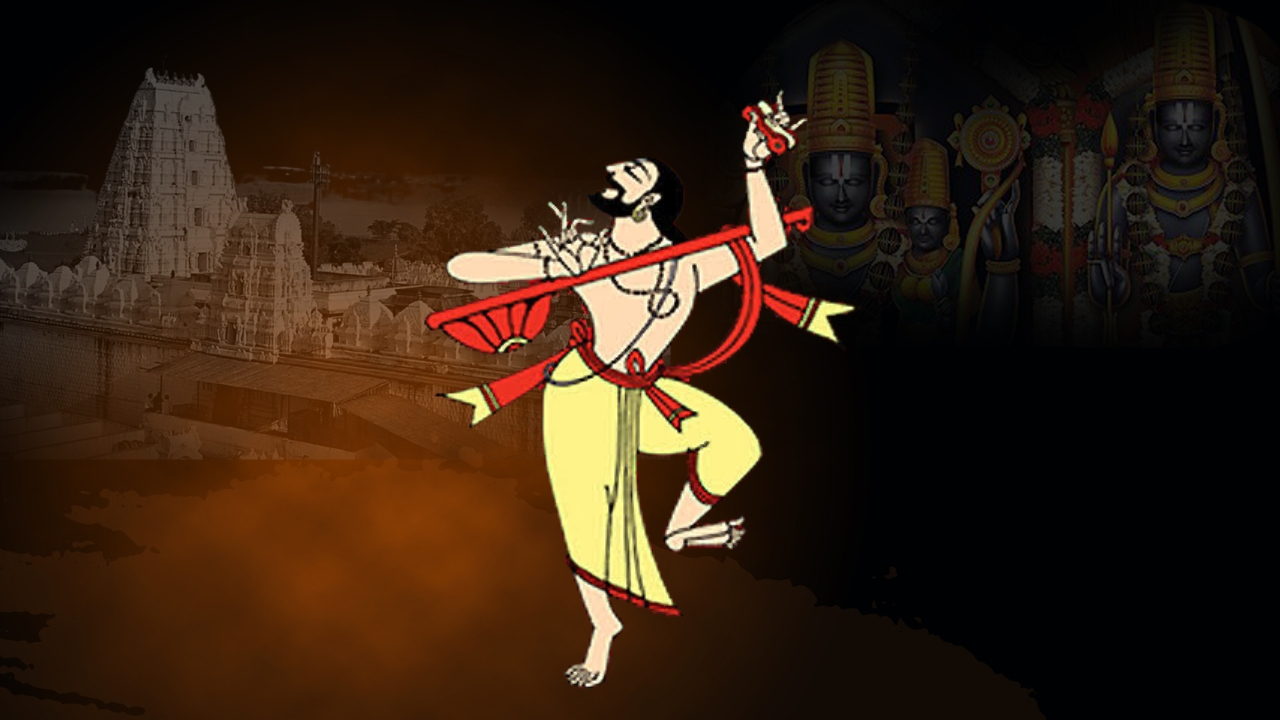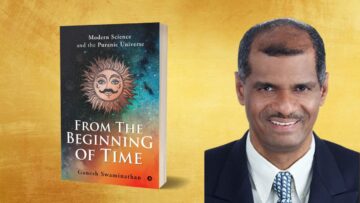INDICA is pleased to announce a Conference on “The Episteme and Experience of Bhakti” at Bhadrachalam on 12-13th February 2024.
Bhakti is a pathway to moksha that, like Tantra and yoga, is open to all. It is a method through which those who lack access to performing shrauta sacrifices can still attain the highest Hindu ideal, moksha. Bhakti’s origins lie in the Vedas, in the very act of friendship the gods display towards humans, saving them from trouble and guarding them. The understanding herein is that the gods indeed live with humans. This same friendship is seen in the Gita between Krishna and Arjuna and is the basis of one of the three main bhaavas (expressions) of bhakti, i.e., sakhya. The other bhavas are madhura (spousal love) and dasya (servitude). The Gita also speaks of bhakti yoga, combining the method of yoga with bhakti, clarifying that yoga is not merely for the renunciant. Bhagavata’s impetus that Kali yuga is the age of quick moksha for women and shudras through namasankirtanam, because sacrificial rituals will not work, is also important to note.
In general, it would not be anathema to say that contemporary Hinduism is significantly shaped and moulded by Bhakti. Popular notions of bhakti have emphasized the role of emotion in it, but it is not emotionalism as much as the embodying of surrender to a deity or the creator. There is a definitive method to bhakti, which the medieval bhaktas, starting from the 8th century onwards, are very particular about. Drawing from Tantra, the gurus in the bhakti tradition saw directly into their disciples, offered deekshas irrespective of caste, class, and gender, and ensured steady progress towards moksha. From a Hindu perspective, the medieval bhaktas are enlightened masters who walked with deities and composed authentic spontaneous verses or even music, considered to be the equivalent to Vedic revelations or the fifth/Panchama Veda.
In Hindu circles, discussions on bhakti have often been hijacked by a futile rating of the superiority of either the jnana or the bhakti margas. It helps here to map these margas onto ashramadharma. A sanyasi falls into the jnana marga; a grhastha into the bhakti marga. Yet, this distinction that might have been truer of the Gita transforms into yet another commingling of method in medieval bhakti. In medieval bhakti, bhaktas stay within society, are often grahasthas, and yet, by surrendering the fruits of all their actions to a chosen deity, walk towards moksha as if they were sanyasis. Thus, medieval bhakti evolved by experimenting with traditional varna-ashrama dharma formulas. It does not, however, divide society into renunciants and laity, as Buddhism and Jainism do.
The role of the medieval bhakti saints as gurus/teachers in bhakti’s innovative moves is larger than life. Medieval bhakti saints have led instructive and exemplary lives, responded to all the key texts of Hinduism (from the Vedas, Vedanta, and brahmasutras to the Gita), single-handedly established mathams that have lasted till date, and convinced large populations to adopt new methods to quickly access moksha. Their commentaries on a common corpus of texts show a continuity in Hinduism among other things. What is also fascinating from the perspective of shraddha is that the bhakti emerging from diverse Indian regions still resemble each other in spirit while being philosophically different, all in a pre-internet era. The multiplicity of philosophical positions in bhakti offers to seekers a wide array of concepts and methods to choose from.
Bhakti’s emergence, as scholars have suggested, was likely caused by the violence of Islam. But it could as well have been driven by an internal urgency for moksha to escape the impending deteriorated age of Kali. Bhakti sects that took up arms to protect Hinduism, whether the Veerashaivas of the south or the Sikhs of the north, are now viewed as separate religions by some quarters–an unwarranted modern development. The confusion surrounding these developments is yet to obtain clarifications. Bhakti’s organic presence in Buddhism and Jainism should perhaps be read as instructive examples in lieu of these developments.
While colonial scholarship regarded bhakti as important for its allegiance to monotheistic values, the truth, as is well-known to any Hindu, is that bhakti could well be non-theistic, polytheistic, dualistic, monotheistic, and much more.
19th-century neo-nationalist narratives shaped by colonialism viewed bhakti as a social reform movement that emerged to bring about justice to those suffering ‘social evils,’ or social discrimination based on caste, class, gender, and so on. In these opportunistic narratives, Bhakti’s basis in Hinduism was severed or downplayed so that it could be read as modern, scientific, proto-feminist, anti-casteist, ritual-rejecting, anti-Sanskrit, literary, and humanitarian among other things.
Apart from being excessively sentimental and defensive in its attempt to demonstrate that ‘we too had egalitarianism’ and ‘our own Luthers,’ this narrative also ignored aspects of bhakti compositions in a selective manner. It read bhaktas as heroes or leaders of a social revolution but by buying wholesale into the Protestant objection to Catholicism, which it then maps unthinkingly onto Hinduism. Thus, brahmins became evil priests obstructing free access to God. Whereas the Bhakti critique of brahmins is, in fact, that they are not more completely brahmins.
Of late, western scholars have noticed the incongruence between the primary sources and the neo-nationalist narrative which also became the social science narrative enveloping Bhakti in post-independence India. As a corrective to the persistent bias, they have highlighted sectarianism, intolerance, social exclusions, patriarchy, power imbalances, inequalities, endorsement of rituals, and politico-economic alliances.
However, in both narratives, bhakti continues to come across as an ‘incomplete revolution’ that was neither as egalitarian nor as progressive as was once thought. In lieu of this, if we are to understand Bhakti on its own terms, then how must we view it? If we are to locate it firmly within Hindu thought and its trajectories, what should we focus upon? If we are to account for Bhakti’s inclusions and exclusions, how must we make sense of it? —these are the questions that concern us.
Hence, we invite scholars to critically engage with both the narratives charted above and theorize Bhakti considering its origins in the Veda, the two major bhakti sutras, bhakti’s focus on a specific deity and simplification of rituals, bhakti’s development in the Mahabharata, the Bhagavad Gita, the Bhagavata, and the various Puranas, bhakti’s relationship with Tantra, bhakti’s emphasis on the role of a guru, the large body of hagiographical literature, and of course the massive corpus of bhakti compositions produced by both men and women of all castes and classes, unmistakably and abundantly present in every region of India, spanning only a thousand years.
At its heart, bhakti aids self-transformation by instilling an attitude of gratitude–something that modern psychology is only now discovering. Bhakti is an effective tool in opposing an unthinking endorsement of materialism and yet, it has been quickly secularized by various camps before its inherent potential for modern living in its original form has been fully explored.
In lieu of these varied histories and recent developments, we welcome papers that reflect upon the episteme and the experience of bhakti.
The curators for the conference will be Dr Nagraj Paturi, Dean IKS, INDICA and Dr Sushumna Kannan, Scholar-in-Residence, INDICA.
The last date for submission of abstracts is 30th November 2023, and for the final papers, it will be 15th January 2024.
Scholars may write to us at namaste@indica.org.in with the name of the conference in the subject title.
As per our tradition of incorporating a tirtha yatra along with a conference, we are pleased to organize the same at the holy place of Bhadrachalam. The dates of the conference coincide with the annual celebration of the life of Bhakta Ramadas.






